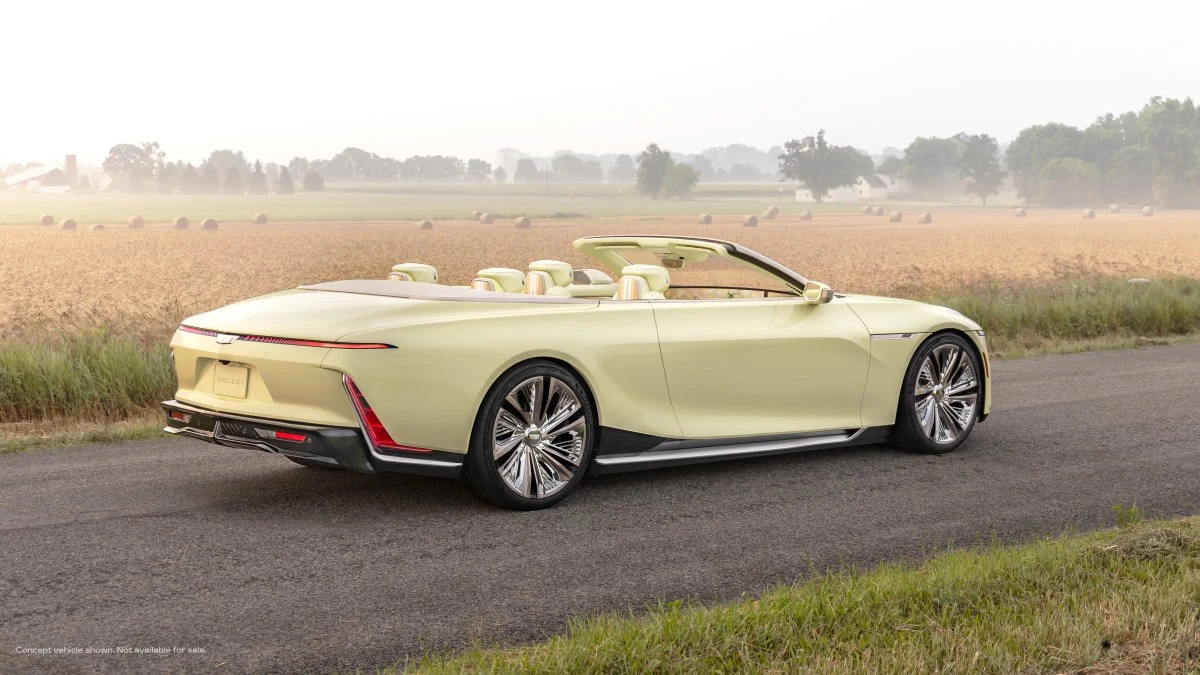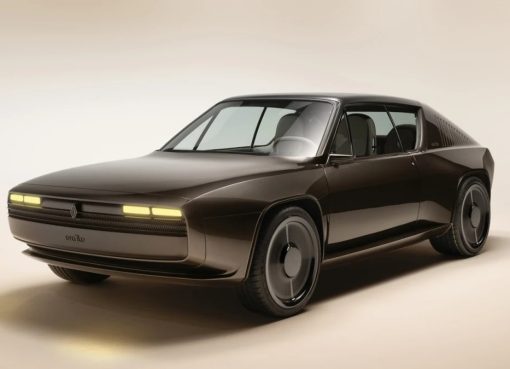Cadillac Sollei is a striking electric convertible. It’s also just a concept for now

WARREN, Mich. — Cadillac has a long line of concepts that illustrate the brand’s history and style. Now comes the Cadillac Sollei, a striking, open-air electric car that hearkens back to the coachbuilt automobiles from a century ago, while showcasing modern technology and renewable materials.
Sollei blends the Latin words for sun, sol, with lei for leisure, to create an airy name for the two-plus-two droptop. The concept car is long with a wide stance, prominent grille and huge wheels. Naturally, it’s a Cadillac, so there’s distinctive lighting elements front and rear, and the back is rounded off in boattail style. Cadillac dusted off a color, Manila Cream, it first used from 1957 to ’58.
The Sollei is basically a convertible version of the Celestiq, a $340,000 limited-run sedan built on General Motors’ historic Tech Center Campus north of Detroit. They have the same length, wheelbase and electric propulsion system.
The big question: Will Cadillac build the Sollei?
“Today it is a design exploration,” Cadillac vice president John Roth said.
GM’s head of design Michael Simcoe said: “This is a concept. Anything is possible, but at the moment this is just a concept.” He added it would be an “easy change” as an “expression” of the Celestiq’s architecture.
Cadillac is not saying yes, but it’s not saying no. Given that its sibling, the Celestiq, will be partially handbuilt in low numbers, it’s certainly conceivable the Sollei could be produced as another bespoke option in Cadillac’s quasi-coachbuilding operation. Unlike some concepts, the Sollei would probably make good business sense, adding scale on a low-volume platform.
But as GM executives note, the Sollei is still a concept car. Though it runs, it doesn’t actually have a roof, and Cadillac didn’t reveal any powertrain specs. Its next duty will be to star in private events for potential Cadillac buyers around the Pebble Beach Concours d’Elegance in August.



The cabin has a 55-inch touchscreen, also found in the new Escalade, and crystal glasses in a beverage chiller. There’s another, smaller screen mounted between the driver and passenger, which is from the Celestiq. The interior also has wood veneer, ambient lighting customizable with 126 different color options, and Nappa leather that uses a pigment to create the look of changing color.
“The vehicle is represented by the sun, travel and leisure,” said Erin Crossley, Cadillac design director.
That is evident in some of the interior details, like a case with a list of 3D-printed bird calls (actual glass whistles) and a journal to log your sightings. The charging pad and map pockets in the doors are made from Fine Mycelium, a trademarked renewable material sourced from mushroom roots by a company called MycoWorks. The floor mats are a material called Bask, a fabric made from fine boucle yarn.
The Sollei follows a string of notable Cadillac concepts, including the Ciel convertible (2011) and Elmiraj (2013) coupe that were never built, but inspired design cues of future production cars. Cadillac recently pulled the Expressive concept out of its vault, a never-before seen design study that previewed the CT4 and CT5 sedans.
Simcoe, GM’s design chief since 2016, said Cadillac uses concepts to create a vision for the brand, while staking out its take on luxury with a level of “American brashness.”
Cadillac used the Sollei’s reveal to show off its client experience center for Celestiq buyers at its Tech Center Campus. Called Cadillac House at Vanderbilt, the structure was designed by celebrated modern architect Eero Saarinin. The building is named after Suzanne Vanderbilt, one of the first women to work at GM Design. Her projects included the 1958 Cadillac Eldorado Seville Baroness coupe and Cadillac Saxony convertible.


